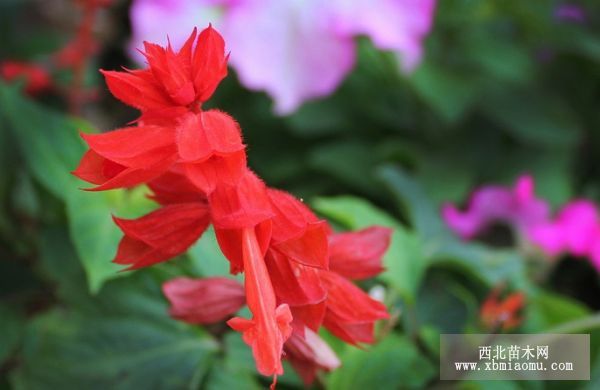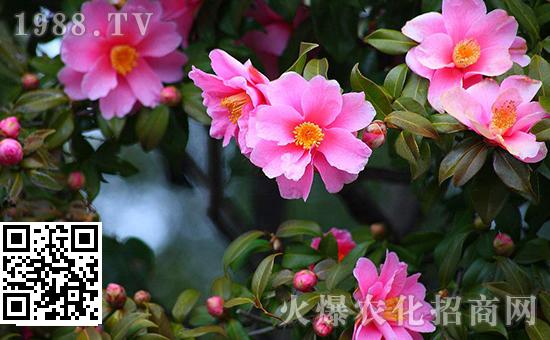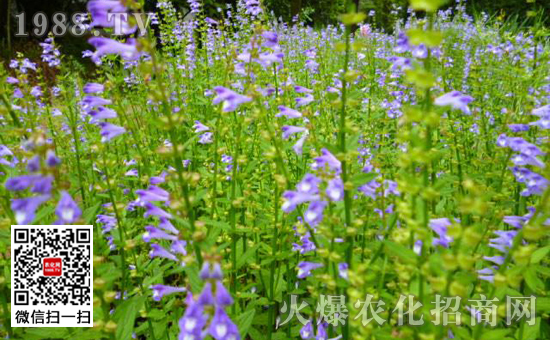A string of red summer maintenance?
A string of red summer maintenance? A string of red origin in South America, like warm and humid climate, its suitable growth temperature of 20~25℃, avoid hot drought. Summer hot season, the temperature is often as high as 35℃, sun exposure, drought and no rain and other adverse environment will make a string of red growth affected, too strong light will inhibit the formation of chlorophyll. During drought, leaf moisture transpires strongly, causing wilting of plants.
A series of red safety summer methods are described as follows:
(1)Shade and cool. Hot summer, drought, to put a string of red basin end to cool and ventilated place, but not too shady. Because a string of red has a certain phototaxis, when asked too long will cause the plant to bend to the light source side, so turn the flowerpot in time to make the plant symmetrical and beautiful. In high temperature season, water should be sprayed frequently around the flowerpot; the surface of the pot, the plant and the leaf surface should also be sprayed to increase the air humidity in a small range and reduce the temperature, reduce the evaporation of the leaf surface, and form a warm and cool microclimate, which is conducive to the flowering of a string of red buds.
(2)Avoid environment too wet and ponding. Potted two string red in the wet environment, on the one hand, will make the stem and leaf excessive growth, easy to lodge; on the other hand, too much water on the pot, the root respiration will be weakened due to insufficient oxygen in the soil, if the duration is too long, the root system will die due to hypoxia and suffocation. Therefore, in summer rainy period, should do a good job of waterlogging, waterlogging prevention measures. If it rains continuously, it is best to take the basin to a shelter. If it rains too late to end the basin suddenly, you can immediately tilt the basin down to remove the ponding in the basin. After heavy rain, the hot sun is easy to hurt the leaves, the plants are steamed under the sun, and the plants are easy to scald in the pot. At this time, the rain-soaked pot should be placed in a cool and ventilated place, so that too much water evaporates quickly. Summer high temperature if sudden rainstorm, causing basin soil rapid cooling, so that the root hair loss of vitality, easy to cause wilting plants, or even death due to physiological water shortage.
(3)Topping and topping. Summer sunshine is abundant, rainfall is abundant, is a string of red growth and development of the most vigorous season. In order to make a bunch of red flowers bloom and control the flowering period, it is generally necessary to take measures of topping. A string of red buds strong, resistant to pruning, from the seedling has 3~4 true leaves, it should be top picking, the formation of lateral branches after germination grow rapidly, generally 10~15 days to pick once, until the flowering stop. Due to the germination of more lateral shoots, plants are gradually plump, nutrient consumption is more. Therefore, it is necessary to increase fertilizer in time to meet their growth needs. Topping is also an effective measure to control the flowering period of a string of red flowers. Generally, about 30 days after topping, the new buds can bloom. If you want it to bloom on National Day, the last topping should be around late August, and the above is an introduction to summer maintenance of a string of red.
A string of red summer maintenance methods
A string of red, also known as burst red, ivory red, for the Labiatae sage plants.
Inflorescences slender, bright red color, flowering and long, adaptable, for China's cities and gardens, the most commonly cultivated herbaceous flowers.
Originated in Brazil, South America. Enjoy warm and sunny environments. Not cold-resistant, semi-shade resistant, avoid frost and high temperature, afraid of water and alkaline soil. A bunch of red fruit for small nuts, oval, containing black seeds, easy to drop, can be self-seeded reproduction.

A string of red origin in South America, like warm and humid climate, its suitable growth temperature of 20-25℃, avoid hot drought. Summer hot season, the temperature is often as high as 35℃, sun exposure, drought and no rain and other adverse environment, will make a string of red growth affected. Too much light inhibits chlorophyll formation. During drought, the leaves transpire strongly, causing wilting of the plant. When exposed to the sun, it will cause damage to the leaves and affect their growth. Now a string of red safety summer methods are introduced as follows: First, shade cooling hot summer heat, drought, to put a string of red basin end to cool and ventilated place, but not too shade. Because a bunch of red has a certain phototaxis, too long a time will cause the plant to bend to the light side. Therefore, it is necessary to rotate the flowerpot at the right time to make the plant symmetrical and beautiful. In high temperature season, water should be sprayed frequently around the flowerpot; the surface of the pot, the plant and the leaf surface should also be sprayed to increase the air humidity in a small range and reduce the temperature, reduce the evaporation of the leaf surface, and form a warm and cool microclimate, which is conducive to the flowering of a string of red buds. Second, avoid the environment is too wet and ponding potted a string of red in too wet environment, on the one hand will make the stems and leaves long, easy to lodge; on the other hand, too much water on the pot, the root respiration will be weakened due to insufficient oxygen in the soil, if the duration is too long, the root system will die due to hypoxia and suffocation. Therefore, in summer rainy period, should do a good job of waterlogging, waterlogging prevention measures. If it rains continuously, it is best to carry the basin to a shelter. If it rains too late to end the basin, immediately tilt the basin down to remove the accumulated water in the basin. After heavy rain, the hot sun is easy to hurt the leaves, the plants are steamed under the sun, and the pot is overheated and easy to die. At this time, the rain pot should be placed in a cool and ventilated place, so that too much water evaporates quickly. Summer high temperature, such as sudden rainstorm, caused by rapid cooling of the basin soil, so that the root hair loss of vitality, easy to cause plant wilting, and even death due to physiological water shortage.
Third, topping and topping in summer with sufficient sunshine and abundant rainfall, it is the most vigorous season for the growth and development of a string of red. In order to make a bunch of red flowers bloom and control the flowering period, it is generally necessary to take measures of topping. A bunch of red budding strong, resistant to pruning. From seedling 3-4 true leaves, it should be top pick, sprout after the formation of lateral branches grow rapidly. Usually 10-15 days to pick the heart once, until the control before flowering stop. Due to the germination of more lateral shoots, plants are gradually plump, nutrient consumption is more. Therefore, it is necessary to increase fertilizer in time to meet their growth needs. Topping is also an effective measure to control the flowering period of a string of red flowers. Generally, about 30 days after topping, the new buds can bloom. If it blooms on National Day, the last topping should be in late August, and a string of red flowers can bloom on National Day. IV. Prevention and control of diseases and insect pests When summer is hot and ventilation is poor, a string of red is easy to cause diseases and insect pests, and Bordeaux mixture, carbendazim, thiophanate, etc. can be sprayed once every half month; if there is red spider harm, dicofol 1000-500 times solution can be sprayed; if aphids are found, omethoate 1000 times solution can be used to kill them; if there are whiteflies, 1000 times solution can be sprayed to kill them. A string of red four seasons maintenance skills
spring
Sowing is usually done in April, and the latter is potted on enclosed balconies in March. After planting, shade properly until survival.
Spring is the early growth of a string of red, to keep the soil moist, to ensure adequate light. Topping 3 to 4 times according to growth conditions to promote the formation of short and plump plants, watering and fertilizing in time after topping.
The planting variety is short string red, according to the situation can top 1~2 times. (Spring topping is very important, missed timing affects plant beauty.)
summer
A common string of red
High temperature resistance, summer maintenance does not need shade, but when the temperature is higher, water should be timely to avoid water shortage and dryness of plants. Late summer plants appear flower Cao, increase watering frequency appropriately, keep basin soil moist, topdressing once.
Crotalaria humilis
Not resistant to high temperatures, temperatures above 30 ° C, only allowed to grow poorly or even die. Potted short string red on the north balcony, shade, keep the pot soil slightly wet, avoid puddles caused by decay. When it's hot, water is often sprayed around to cool it down. Late summer gradually cool, can be appropriate to increase the light, appropriate topdressing.
autumn
Autumn is the peak flowering season for a string of red flowers. Keep the soil moist and ensure sufficient moisture and light.
After flower failure, we should cut off the flowering branches in time, apply fertilizer appropriately, control the temperature between 18~25℃, and flower again. The temperature decreases in late autumn, flowers have no ornamental value after failure, and a string of red is an annual, flowers can be removed after falling behind.
winter
No need for maintenance in winter, the plant has died, can be re-sown in spring!
- Prev

How to raise tea plum?
How to raise tea plum? tea plum is usually propagated by cutting. it is not allowed to blossom within 1-2 years after cuttage, in order to cultivate the tree shape, and it can only blossom after 3 years. In the management, we should mainly master soil, fertilizer, water and light. The rotten leaf soil with acidic, loose and fertile characteristics should be selected in the basin soil to be suitable for the growth of tea plum.
- Next

How to grow scutellaria barbata?
The planting method of scutellaria barbata, the plant height of half-branch lotus is 30~40 cm. The lower part of the stem is creeping and rooting, the upper part is erect, the stem is square and green. The leaves are opposite, the leaves are triangular oval or oval, the edges have wavy blunt teeth, the lower leaves are larger, and the petiole is extremely short. Flowers small, 2 opposite. The flowering period is from May to June
Related
- Fuxing push coffee new agricultural production and marketing class: lack of small-scale processing plants
- Jujube rice field leisure farm deep ploughing Yilan for five years to create a space for organic food and play
- Nongyu Farm-A trial of organic papaya for brave women with advanced technology
- Four points for attention in the prevention and control of diseases and insect pests of edible fungi
- How to add nutrient solution to Edible Fungi
- Is there any good way to control edible fungus mites?
- Open Inoculation Technology of Edible Fungi
- Is there any clever way to use fertilizer for edible fungus in winter?
- What agents are used to kill the pathogens of edible fungi in the mushroom shed?
- Rapid drying of Edible Fungi

